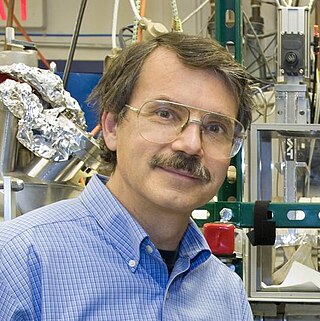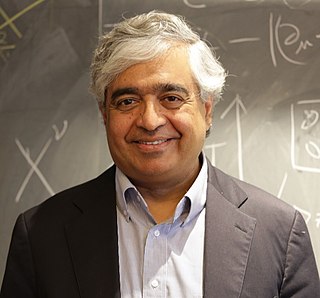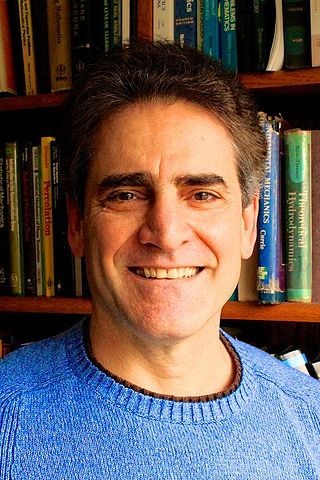
Yashwant Singh (born 28 July 1944) is an Indian theoretical physicist known for his contributions to soft matter physics. He is at present Distinguished Professor and INSA Senior Scientist at Banaras Hindu University.

Yashwant Singh (born 28 July 1944) is an Indian theoretical physicist known for his contributions to soft matter physics. He is at present Distinguished Professor and INSA Senior Scientist at Banaras Hindu University.
Dr. Yashwant Singh born on 28 July 1944 in a village near Varanasi, Uttar Pradesh. He completed his B.Sc. and M.Sc. in Physics from Gorakhpur University (Now DDU University) in 1962 and 1964. He then joined Indian Association for the Cultivation of Sciences (IACS), Jadavpur, Kolkata, where he worked on transport phenomenon in gaseous state and obtained D. Phil. from Calcutta University (1969). He started his professional career as lecturer at Banaras Hindu University where he continues to work as a Distinguished Professor. In between he has worked at IBM Research Laboratory, California (1976–78). [1] and University of Illinois, Urbana Champaign (1982–84) United States. [2] [3]
Singh has made contributions to the theory of liquids, liquid crystals, [4] polymer statistics, [5] and to the theory of liquid-solid and solid-solid transitions. [6]
He is an elected Fellow of Indian Academy of Sciences, Bangalore, [7] The National Academy of Sciences, India and The Indian National Science Academy, New Delhi [8]

A crystallographic defect is an interruption of the regular patterns of arrangement of atoms or molecules in crystalline solids. The positions and orientations of particles, which are repeating at fixed distances determined by the unit cell parameters in crystals, exhibit a periodic crystal structure, but this is usually imperfect. Several types of defects are often characterized: point defects, line defects, planar defects, bulk defects. Topological homotopy establishes a mathematical method of characterization.
Superfluid helium-4 is the superfluid form of helium-4, an isotope of the element helium. A superfluid is a state of matter in which matter behaves like a fluid with zero viscosity. The substance, which looks like a normal liquid, flows without friction past any surface, which allows it to continue to circulate over obstructions and through pores in containers which hold it, subject only to its own inertia.
Jellium, also known as the uniform electron gas (UEG) or homogeneous electron gas (HEG), is a quantum mechanical model of interacting electrons in a solid where the positive charges are assumed to be uniformly distributed in space; the electron density is a uniform quantity as well in space. This model allows one to focus on the effects in solids that occur due to the quantum nature of electrons and their mutual repulsive interactions without explicit introduction of the atomic lattice and structure making up a real material. Jellium is often used in solid-state physics as a simple model of delocalized electrons in a metal, where it can qualitatively reproduce features of real metals such as screening, plasmons, Wigner crystallization and Friedel oscillations.
The classical-map hypernetted-chain method is a method used in many-body theoretical physics for interacting uniform electron liquids in two and three dimensions, and for non-ideal plasmas. The method extends the famous hypernetted-chain method (HNC) introduced by J. M. J van Leeuwen et al. to quantum fluids as well. The classical HNC, together with the Percus–Yevick approximation, are the two pillars which bear the brunt of most calculations in the theory of interacting classical fluids. Also, HNC and PY have become important in providing basic reference schemes in the theory of fluids, and hence they are of great importance to the physics of many-particle systems.

Polyamorphism is the ability of a substance to exist in several different amorphous modifications. It is analogous to the polymorphism of crystalline materials. Many amorphous substances can exist with different amorphous characteristics. However, polyamorphism requires two distinct amorphous states with a clear, discontinuous (first-order) phase transition between them. When such a transition occurs between two stable liquid states, a polyamorphic transition may also be referred to as a liquid–liquid phase transition.

In materials science, an interstitial defect is a type of point crystallographic defect where an atom of the same or of a different type, occupies an interstitial site in the crystal structure. When the atom is of the same type as those already present they are known as a self-interstitial defect. Alternatively, small atoms in some crystals may occupy interstitial sites, such as hydrogen in palladium. Interstitials can be produced by bombarding a crystal with elementary particles having energy above the displacement threshold for that crystal, but they may also exist in small concentrations in thermodynamic equilibrium. The presence of interstitial defects can modify the physical and chemical properties of a material.
Second sound is a quantum mechanical phenomenon in which heat transfer occurs by wave-like motion, rather than by the more usual mechanism of diffusion. Its presence leads to a very high thermal conductivity. It is known as "second sound" because the wave motion of entropy and temperature is similar to the propagation of pressure waves in air (sound). The phenomenon of second sound was first described by Lev Landau in 1941.

Alex K. Zettl is an American experimental physicist, educator, and inventor.

Positron annihilation spectroscopy (PAS) or sometimes specifically referred to as Positron annihilation lifetime spectroscopy (PALS) is a non-destructive spectroscopy technique to study voids and defects in solids.

Subir Sachdev is Herchel Smith Professor of Physics at Harvard University specializing in condensed matter. He was elected to the U.S. National Academy of Sciences in 2014, and received the Lars Onsager Prize from the American Physical Society and the Dirac Medal from the ICTP in 2018. He was a co-editor of the Annual Review of Condensed Matter Physics from 2017-2019.

The Plasmakristall-3 Plus laboratory was a joint Russian-German laboratory for the investigation of dusty/complex plasmas on board the International Space Station (ISS), with the principal investigators at the German Max Planck Institute for Extraterrestrial Physics and the Russian Institute for High Energy Densities. It was the successor to the PKE Nefedov experiment with improvements in hardware, diagnostics and software. The laboratory was launched in December 2005 and was operated for the first time in January 2006. It was used in 21 missions until it was deorbited in 2013. It is succeeded by the PK-4 Laboratory.

Salvatore Torquato is an American theoretical scientist born in Falerna, Italy. His research work has impacted a variety of fields, including physics, chemistry, applied and pure mathematics, materials science, engineering, and biological physics. He is the Lewis Bernard Professor of Natural Sciences in the department of chemistry and Princeton Institute for the Science and Technology of Materials at Princeton University. He has been a senior faculty fellow in the Princeton Center for Theoretical Science, an enterprise dedicated to exploring frontiers across the theoretical natural sciences. He is also an associated faculty member in three departments or programs at Princeton University: physics, applied and computational mathematics, and mechanical and aerospace engineering. On multiple occasions, he was a member of the schools of mathematics and natural sciences at the Institute for Advanced Study, Princeton, New Jersey.
Hyperuniform materials are characterized by an anomalous suppression of density fluctuations at large scales. More precisely, the vanishing of density fluctuations in the long-wave length limit distinguishes hyperuniform systems from typical gases, liquids, or amorphous solids. Examples of hyperuniformity include all perfect crystals, perfect quasicrystals, and exotic amorphous states of matter.

Bidyendu Mohan Deb is an Indian theoretical chemist, chemical physicist and a professor at the Indian Institute of Science Education and Research, Kolkata (IISER). he is known for his studies in theoretical chemistry and chemical physics. He is an elected fellow of the International Union of Pure and Applied Chemistry, The World Academy of Sciences, Indian National Science Academy and the Indian Academy of Sciences. The Council of Scientific and Industrial Research, the apex agency of the Government of India for scientific research, awarded him the Shanti Swarup Bhatnagar Prize for Science and Technology, one of the highest Indian science awards, in 1981, for his contributions to chemical sciences.
Suresh Kumar Bhatia is an Indian-born chemical engineer and a professor at the School of Chemical Engineering, University of Queensland. He is known for his studies on porous media and catalytic and non-catalytic solid fluid reactions. He was awarded an ARC Australian Professorial Fellowship (2010–15) and is an elected fellow of the Indian Academy of Sciences (1993), and the Australian Academy of Technological Sciences and Engineering (2010). In 1993, the Council of Scientific and Industrial Research, the Indian government's peak agency for scientific research, awarded him the Shanti Swarup Bhatnagar Prize for Science and Technology, one of the highest Indian science awards, for his contributions to the engineering sciences.
Nathaniel Joseph Fisch is an American plasma physicist known for pioneering the excitation of electric currents in plasmas using electromagnetic waves, which was then used in tokamak experiments. This contributed to an increased understanding of plasma wave–particle interactions in the field for which he was awarded the James Clerk Maxwell Prize for Plasma Physics in 2005 and the Hannes Alfvén Prize in 2015.

Serafim Kalliadasis is an applied mathematician and chemical engineer working at Imperial College London since 2004.

Kare Narain Pathak is an Indian Theoretical Condensed Matter Physicist, Professor Emeritus and Former Vice-Chancellor of the Panjab University. He is an elected Fellow of several science academies such as the Indian Academy of Sciences, Indian National Science Academy, National Academy of Sciences, India, National Research Council Canada and Punjab Academy of Sciences.
Richard Allan Ferrell (1926–2005) was an American theoretical physicist, specializing in condensed matter physics and statistical physics.
Dov I. Levine is an American-Israeli physicist, known for his research on quasicrystals, soft condensed matter physics, and statistical mechanics out of equilibrium.